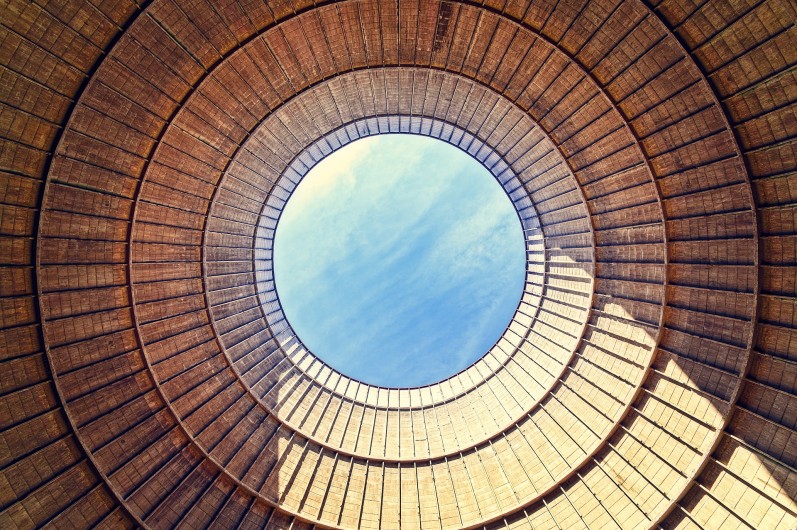Identifying the components of tomorrow's low-carbon cement

With 10 billion tons produced worldwide every year, cement represents a major challenge in terms of energy transition. In France, industry professionals are aiming to reduce their CO2 emissions by 50% by 2030, then achieve carbon neutrality by 2050. The race is therefore on to decarbonize the entire industry, not only through manufacturing processes (energy efficiency, choice of fuels, capture of CO2 emissions), but also through the choice of other raw materials and new alternatives to clinker.
Marie-Noëlle de Noirfontaine and Mireille Courtial, researchers at the Irradiated Solids Laboratory (LSI), have responded to calls for projects issued by cement manufacturers in this context. Their work is part of the Elysée's France 2030 investment plan. “We're interested in alternative materials to clinker” explains Marie-Noëlle de Noirfontaine. “This is one of the major levers we can use to reduce greenhouse gas emissions” adds Mireille Courtial. Two-thirds of the emissions from the clinker manufacturing process come from the decarbonation of limestone into lime and CO2. The remaining third comes from the energy used to heat the kiln required for this operation.
For some time now, a proportion of clinker has been replaced in common cements by substitute materials. These are natural materials and finely ground vitreous or vitro-crystalline industrial by-products from blast furnaces or thermal power plants. However, the gradual closure of these sites means that new substitutes must be found. The wide availability of recycled glass makes it a very attractive alternative. More generally, materials containing, for example, a finely divided siliceous or silico-aluminous vitreous phase - such as the natural pozzolans already used by the Romans - are attracting the attention of scientists. A little lexical clarification: glass refers to any solid material whose atoms are disordered, as opposed to crystals, which have precise, repetitive arrangements of their atoms. It's also known as an amorphous solid. “And the more depolymerized the glass network, the more reactive it will be, and therefore the more likely it is to replace clinker” explains Marie-Noëlle de Noirfontaine.
Upstream of the process
From industrial waste to volcanic ash, the two scientists analyzed a representative panel of clinker replacement candidates supplied by cement manufacturers. By sifting through these samples using spectroscopy (Raman, X-ray fluorescence) and X-ray diffraction, they were able to characterize and classify them (nature, order of atoms). “We cross-referenced the results obtained using these three techniques and developed a reading grid that can easily be used by cement manufacturers. It informs them about the degree of polymerization of the glassy structures contained in our 13 specimens, and therefore about the reactivity of each and their potential to replace clinker", reveals Mireille Courtial.
These results come at a very early stage in the production chain for new decarbonated cements. “The detailed characterization of these materials enables chemists to design activators capable of depolymerizing the most stable glasses, thus broadening the range of possible alternatives to clinker. This is the boom of the years to come in the sector", enthuses Marie-Noëlle de Noirfontaine.
For, in addition to the 13 samples from cement manufacturers, other substitute materials have appeared on the bench of the two researchers. “We have been approached by Saint-Gobain to characterize biomass ash from the combustion of plant matter (wood, straw), animal matter (carcasses) and waste (paper). Our results will reveal the potential of each type of ash. Then it's up to the chemists to take over” emphasizes Mireille Courtial.
Nuclear power, too, is concerned
In addition to reducing greenhouse gas emissions, the work carried out by the two scientists provides essential knowledge for a national research project conducted in partnership with CEA-DES. “We are contributing to the study of cements used in deep geological repositories for radioactive waste, as well as in nuclear power plant containment systems”, explain the two researchers. The characterization of a material's constituents provides information on its resistance to radiation (gamma and electron) and to its environment. Needless to say, this work raises a number of safety issues.
*LSI : a joint research unit CEA, CNRS, École Polytechnique, Institut Polytechnique de Paris, 91120 Palaiseau, France
 Support l'X
Support l'X